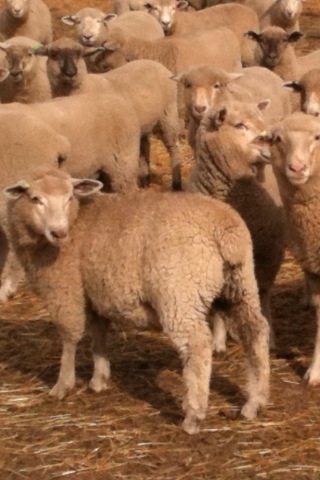What do we need to do to ensure we can still sell lamb to our grand children’s friends?? How will people in 50+ years time be buying lamb? To me, we have two options:
1. be a price competitive protein source, or
2. be a specialty, high end product that has guaranteed quality and sold with the equivalent price tag attached.
Upon speaking to many people in Australia and overseas, maybe there is room for both. Different farming regions, intensities, and management styles emphasises that farming is not a recipe. Many people can’t afford lamb at the very high prices – but should these people be excluded from eating it??
A very good ‘fishermen’ friend and fellow Nuffield Wayne Dredge explained it really well to me one day. He said he was constantly asked if he was annoyed at the people who bought imported fish rather than Australian fish. He replies… “anyone who eats fish as opposed to another protein source is good for the industry. If the lower price of imported fish allows them to eat fish, then it plays a vital role. When that person gets a pay rise, they are going to want to buy the Australian fish”.
I believe, in reality, there is room for both lamb markets to exist. The only concern is that eating quality does not drop as a result of on farm production gains. We have seen this happen in other industries, we have to be smart enough to prevent it happening in ours. Current stats show that only 7 in 10 consumers have a good eating experience with Lamb. That leaves a fair few people who probably won’t rush back to get another chop for a while!
During my latest trip, I had the privilege of spending a day with Henrick Anderson, CEO at Carometec in Denmark. Carometec are working with Murdoch University, Sheep CRC and MLA to develop an inline eating quality measurement for all carcasses. To me, this is where the future lies in the lamb industry and is a really exciting space to be involved in.
I believe individual animal management would come into its own if we had some good product feedback. There are benefits of individual on farm measuring, however, if the information stops at the farm gate, it is very limiting. If we could get product feedback, we could fine tune our decision making on farm to produce a product that was consistently hitting the desired market. Getting paid on quality rather than weight and fat score is something that could be the way of further developing the Australian top end lamb market!
It is becoming very evident as I near the end of my Nuffield travel year that the more I learn, the more I want to learn. The sheep industry has so much to offer and some top people leading the way. This won’t be the last of my posts but thought it a fitting time to thank all those that have helped me this year, it has been the best yet – I can’t wait for the sequel!! I’d also like to thank my employer Burgess Rural for giving me the opportunity to take part in the Nuffield experience, as well as Nuffield Australia and my sponsor the William Buckland foundation. A truly rewarding year.
Until next time… Enjoy your lamb!!


Some great thoughts Han, I think it is important that in Australian agriculture, we understand that there are lots of facets that make up our industry and that we aren’t always quick to bash another producer just because they do things differently to us. There is room in this country to produce foods for different markets. Perhaps to ensure people know that a lamb chop isn’t a lamb chop, (3/10 people who didn’t enjoy) we need to get better at marketing and product evenness. (as you say) I love Dredgies thoughts also, it is obvious why he and you are scholars. Both thinking outside the box and looking at how to use the positives and change the negatives. Two great thought leaders, keep up the great work.